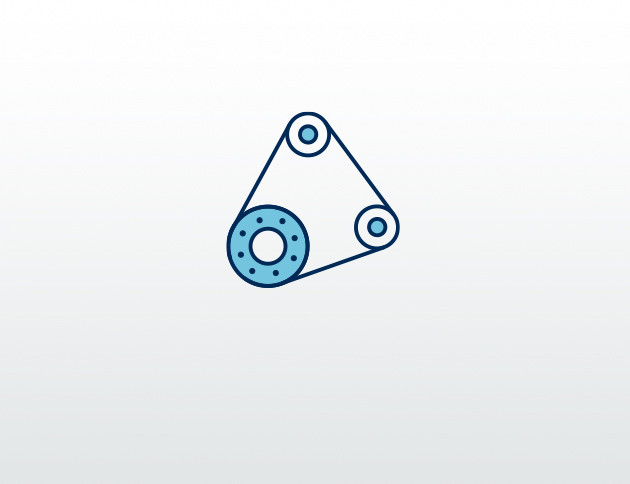
Power Transmission and Solutions for Transporters
Power Transmission
The primary function of power transmission in mechanics is to transfer energy between various connected components, from the engine to the final element. Transmitting power also means simultaneously transmitting force and speed. During transmission, part of this power is dissipated due to friction or lost in the form of heat.
Power transmission is widely used in most mechanical applications where a connection between two rotating components is required to transfer kinetic energy from a conductor to a conduit. This can be achieved using electric motors, gear boxes, couplings and joints, belts or chains.
Adopting the correct transmission system and optimizing energy transfer processes allows designers to fully exploit the advantages offered by each mechanical technology. These technologies enable efficient control of processes in various sectors, such as the pharmaceutical, paper, packaging, steel, marine industries, and many others, through precise control.
The need for efficient and effective transmission technology grows with the importance of the application. Users can benefit from lower operating expenses and reduced energy consumption by optimizing power transmission processes.
Solutions for Transporters
The handling of semi-finished or finished products during the production process has seen an increasing expansion of its needs, in parallel with the growing complexity of new products and the more extreme performance requirements of machinery in the process industry. Each product, whether light or heavy, simple or complex, has specific transport needs that must be addressed with competence and attention. Therefore, it is crucial to conduct a thorough analysis of the working environment and the variables connected to it.
These specific transport needs can be fulfilled with the right product, whether standard or special, and the choice must be trusted exclusively to personnel experienced in proposing solutions suitable for the criticalities of handling or the environment in which it occurs. Particular attention must be considered in managing acidic or basic environments, due to fumes or washes, carefully evaluating the materials and specific regulations, especially in cases of food contact. Other situations to consider include handling special products that require controlled gripping, high grip, resistance to heavy loads, resistance to elevated temperatures, or interaction with optical reading sensors.
Each application has unique characteristics that must be addressed with a dedicated and multidisciplinary approach, using the appropriate product in terms of performance, to ensure results always in line with the expectations of manufacturers and end users.